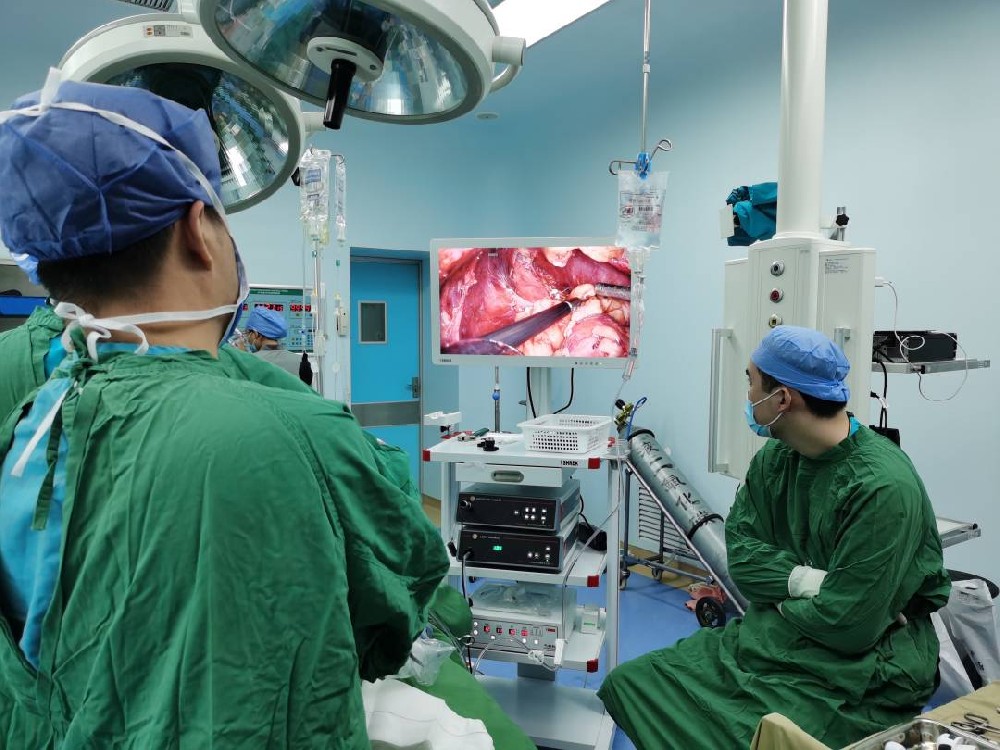- Shanghai, China
- [email protected]
- +86-21-58189111
Developing
(1) Pelvic endoscopy
In 1901, the Russian gynecologist D.O.ott also incised the posterior fornix of the vagina under the illumination of the frontal mirror and put it into a cystoscope to observe a woman's abdominal cavity. This is the first pelvic endoscopy.
(2) Diagnostic laparoscopy
In 1910, Jacobaeus.H.C first applied the trocar to insert the trocar into the abdominal wall and put the air into the abdominal cavity through the cannula, and then put it into the cystoscope for examination. In 1944, Raoul Palmerjiang of France formally applied laparoscopy in the field of gynecology, examined a large number of infertile patients and formulated the operation routine of laparoscopy. In 1963, a monograph was published, which systematically introduced some relatively simple operations under laparoscopy, such as: tubal ventilation and fluid drainage; simple visceral adhesion separation; tubal electrocoagulation and sterilization; endometriosis foci electrocoagulation , electrocautery, etc.
(3) Laparoscopy
After entering the 1970s, due to the invention of cold light source and glass fiber endoscope, the artificial pneumoperitoneum monitoring device of Semm in Germany, the automatic pneumoperitoneum machine, came out. Since then, laparoscopic surgery has developed vigorously. Because of its small damage and no need for laparotomy, it was quickly accepted by both doctors and patients. In 1980, Dr. Nezhat in the United States began to use video laparoscopy for surgery. The operation field is clearly displayed on the screen, which expands the field of vision. Many doctors can see the operation process at the same time, which is conducive to technical exchanges and discussions, and also facilitates the cooperation of assistants and the assistance of anesthesiologists. In the late 1980s, Professor Kurt Semm of Germany invented and created many new surgical instruments and techniques. Such as: microscopic suture instruments, irrigation pumps, various forceps, scissors, combined shredders, cutters, etc. There are various means of hemostasis under the microscope: there are unipolar coagulation, bipolar coagulation, ligation ferrule, internal suture technology, titanium clips, staplers and other technological advancements that allow more complicated operations to be completed under the microscope. In 1988, Reich H performed the first laparoscopic total hysterectomy. Since then, the scope of gynecological operations has become larger and larger, and almost 90% of gynecological operations can be completed under laparoscopy.

Laparoscopic right adrenalectomy
Advantage
1. Multi-angle "inspection", the effect is intuitive: the endoscope can be inspected from different angles and directions without affecting the abdominal organs, and even some deep positions can be seen to achieve the effect of intuitive inspection, no missed diagnosis, no misdiagnosed.
2. Fast recovery: Laparoscopic surgery is performed in a closed pelvis and abdominal cavity, with little disturbance to the internal environment. The trauma suffered by the patient is far less than that of laparotomy, and the patient recovers quickly after surgery without complications and sequelae.
3. Short hospital stay: The operation is performed by professional physicians, and the treatment can be completed in a short time without affecting normal physiological functions, and normal work and life can be resumed after surgery.
4. Good abdominal beauty effect: traditional surgical scars are long linear, and laparoscopic surgery does not leave scars, which is suitable for women's beauty needs.
5. Reduce the burden on patients: The operation is minimally invasive, with less medication, low cost, quick recovery, and no need for hospitalization, reducing the burden on patients.
Leave a Comments